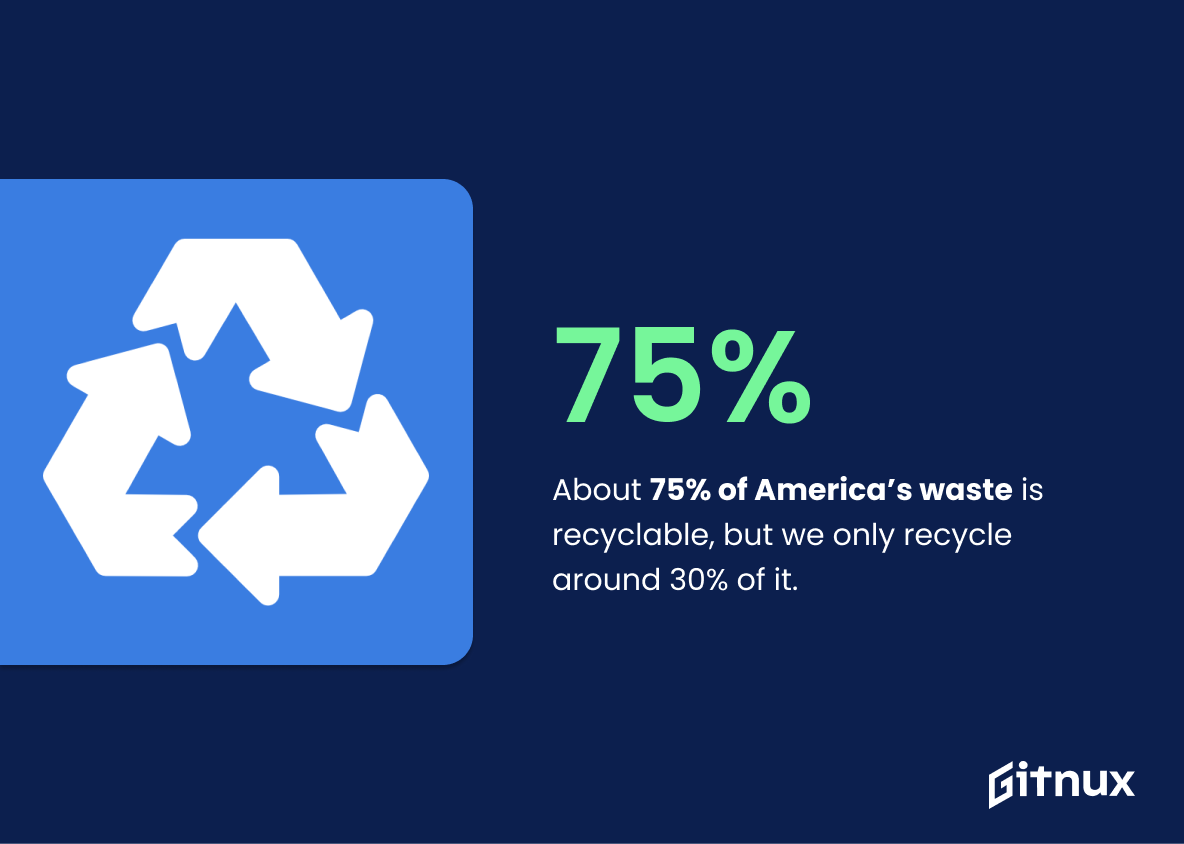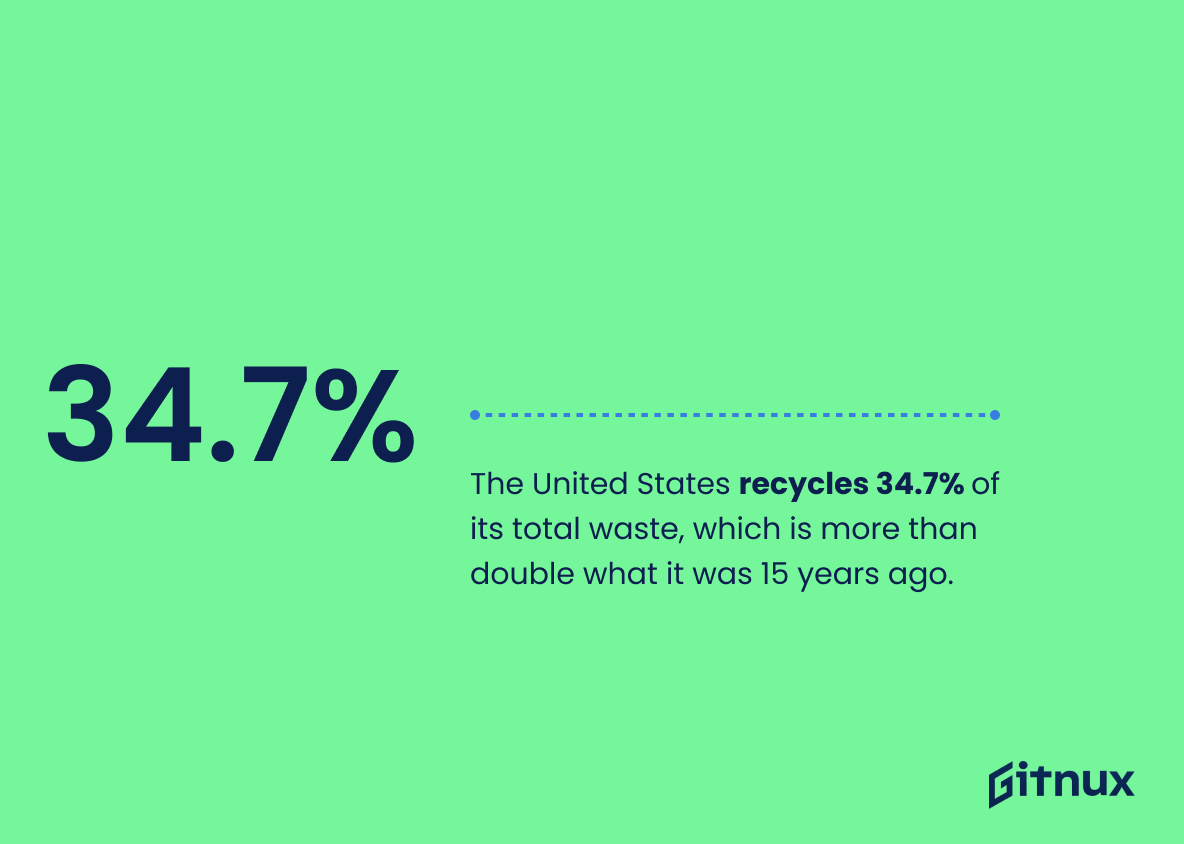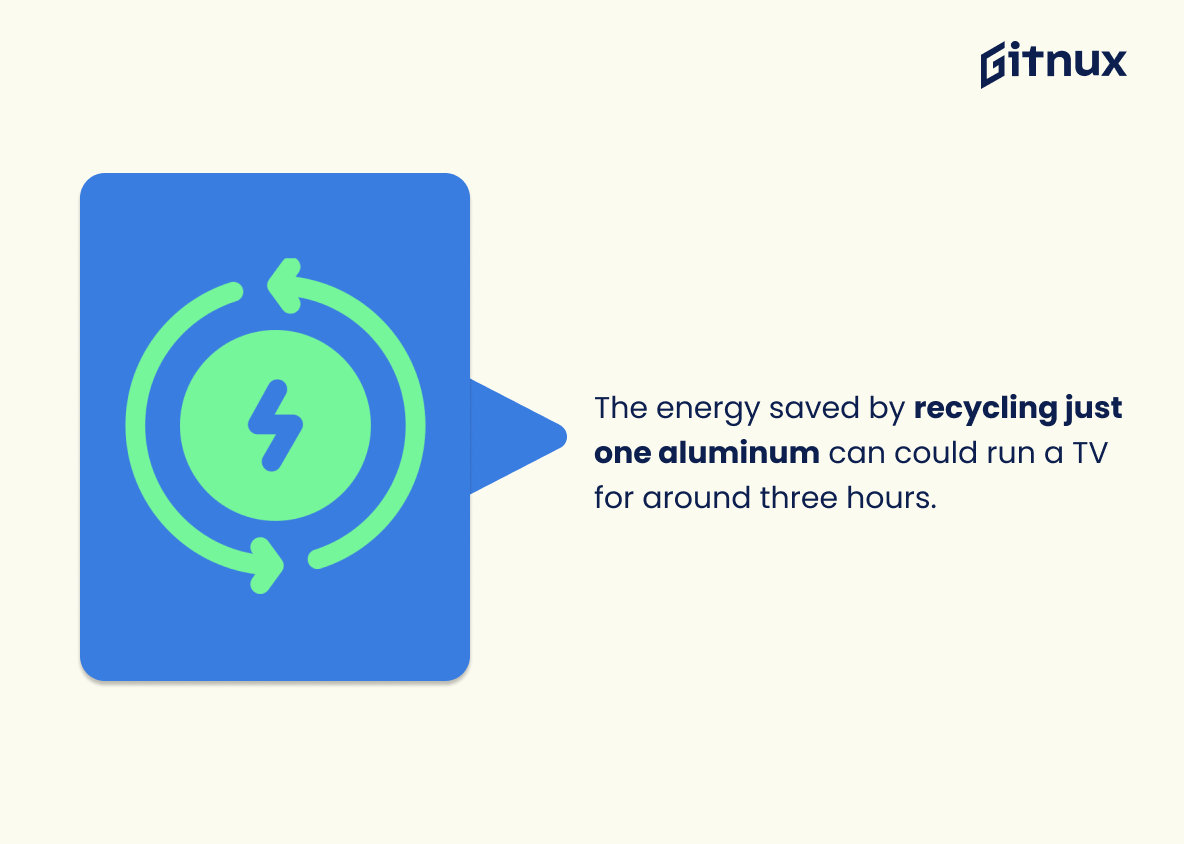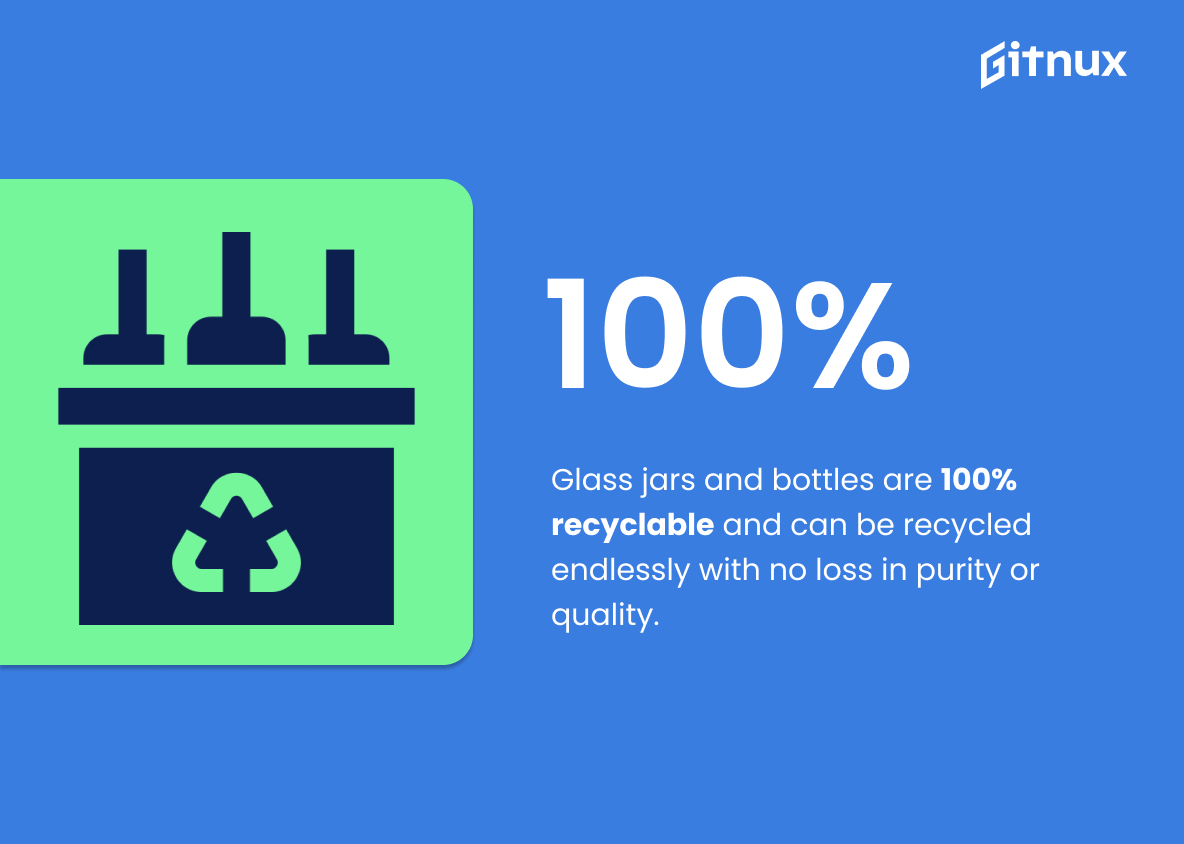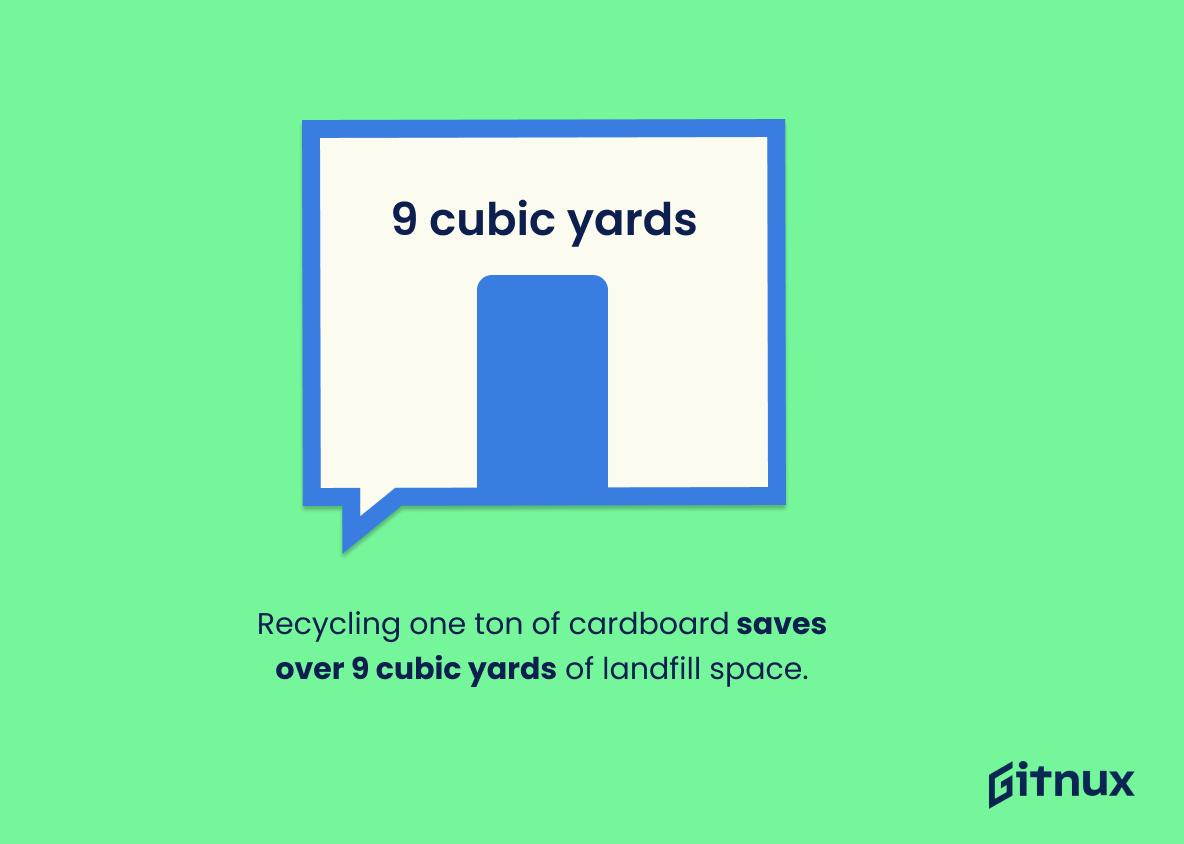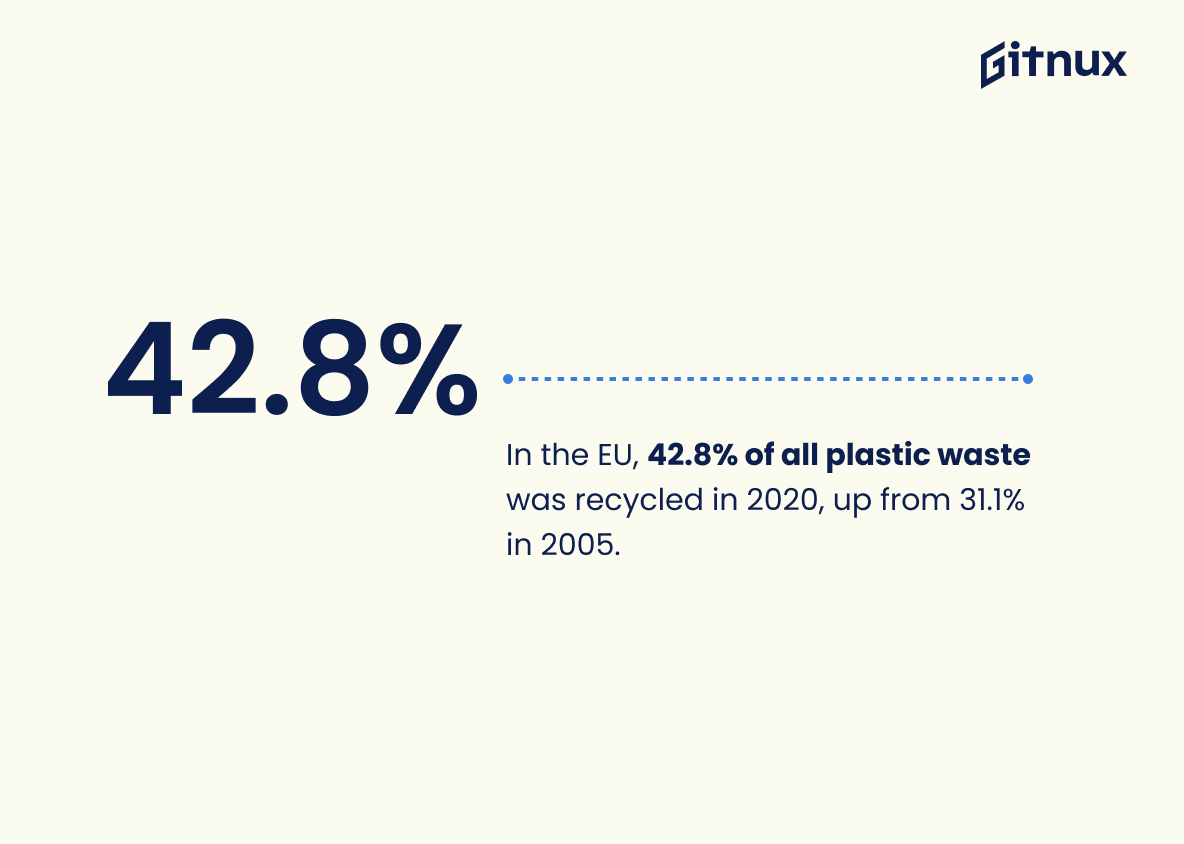In our rapidly evolving world, the issues of waste management and environmental sustainability are becoming increasingly important, hence the growing interest in recycling. Understanding the dynamics of recycling not only helps us tackle the enormous challenge of waste, but also unlocks hidden potential for economic growth, job creation, and resource conservation.
This blog post delves into the fascinating world of recycling statistics, showcasing crucial insights and empirical trends that serve as a sobering reminder of the urgency to embrace more sustainable practices. Journey with us into the numbers behind the global recycling efforts and grasp the true impact of our everyday consumption and disposal habits.
The Latest Recycling Statistics Unveiled
About 75% of America’s waste is recyclable, but we only recycle around 30% of it.
Peeling back the startling layers of these figures, it becomes clear that America is squandering a golden opportunity: a whopping three-quarters of our waste could be reprocessed and reincarnated, breathing new life into what is traditionally viewed as ‘rubbish.’ Yet, our current recycling behavior falls woefully short, with the compass needle of practice only pointing to 30%—a far cry from the attainable 75%.
Indeed, these numbers paint a compelling before-and-after picture; a snapshot of what happens now, juxtaposed against a captivating vision of what could be. They hold up a mirror to each of our individual contributions, calling us to rise to the challenge of altering this wasteful narrative stylishly scripted in red, white and blue. These statistics aren’t just numbers. They’re a call-to-action—inviting us to maximize our recycling efforts and bring about a more sustainable, waste-conscious future. It’s time for the American 30% to embrace the 75% potential.
The average American throws away approximately 185 pounds of plastic per year.
Diving into the astounding figure of 185 pounds, it shockingly reveals the per capita plastic disposal contribution of an ordinary American in a given year. This statistic, acting as a stark indicator, reveals the magnitude of the plastic waste epidemic in our society. It underscores the urgent need for enhanced recycling practices, responsible disposal of plastics and significant behavioral shift towards sustainable consumption habits.
By casting a bright spotlight on this statistic in a blog post about Recycling Statistics, we can successfully ignite a much needed discourse on the fundamental necessity and impact of incorporating recycling in our daily lives. The conversation steered by this number could undoubtedly increase awareness, propel proactive individual actions and instigate policy changes related to recycling and waste management.
The United States recycles 34.7% of its total waste, which is more than double what it was 15 years ago.
Delving into the depth of recycling, the astonishing rise in America’s recycling efforts, from under 15% to a whopping 34.7% in 15 short years, unfurls a successful story of conscious living. This dramatic uptick underlines the increased commitment of the US to sustainable living and environmental health.
This statistic substantiates the power and impacts of bolstered environmental policies, public awareness campaigns, and community involvement. Further, it sets a crucial benchmark for measuring progress and identifying areas of improvement, while also asserting a befitting example for other nations to evaluate their recycling strategies.
The energy saved by recycling just one aluminum can could run a TV for around three hours.
Imagine being able to stream your favorite show for an entire three hours. That’s the power you’d harness from recycling a single aluminum can. This figure isn’t just intriguing; it underlines the striking significance of recycling within our daily lives. In an era of increasing energy consumption, such compelling details emphasize the substantial energy-saving potential of recycling.
As we dissect the maze of recycling statistics in this blog post, this tidbit serves as a potent reminder of the surprising ways waste management can be linked to our day-to-day activities. This interplay between something as mundane as throwing away an aluminum can and something as vital as energy conservation makes the narrative around recycling more personalized and relatable.
If all newspapers were recycled, we could save about 250,000,000 trees yearly.
Imagine a world where 250,000,000 trees remain standing every single year. Just think about the extraordinary amount of oxygen produced, carbon dioxide consumed, and habitats preserved for countless creatures. This vision is not just a sustainable pipe dream, but an attainable reality hinged on a simple act – recycling all newspapers.
In the vast universe of recycling statistics, this particular figure serves as a compelling beacon of hope. It underlines the direct influence of human habits on the planet’s green cover, driving home the impact of individual actions. Essentially, it offers each reader the possibility to become a literal lifesaver, sparking inspiration and stoking determination for enhanced recycling endeavors.
Glass jars and bottles are 100% recyclable and can be recycled endlessly with no loss in purity or quality.
Delving into a fascinating exploration of recycling statistics, the near-magical quality of glass emerges—its remarkable 100% recyclability without any degradation in purity or quality. Both a charming call-back to science class and a beacon of sustainability, this statistic underscores the pivotal role glass recycling plays in environmental conservation.
Every bottle or jar tossed into the recycle bin has the potential for an eternal, Phoenix-like rebirth, again and again, without a drop of loss in quality. It’s an inspiring perspective that offers readers both substance and hope, fueling further discussions on sustainable living practices and effective waste management.
Recycling one ton of cardboard saves over 9 cubic yards of landfill space.
In the vibrant dance of numbers that is recycling statistics, the fact that recycling just one ton of cardboard saves over 9 cubic yards of landfill space becomes the rousing crescendo. Consider this, a vast landscape of reclaimed land, once a burgeoning landfill, cleared thanks to the simple act of recycling cardboard. Every cubic yard translates into a healthier, cleaner environment for future generations.
That’s the subtle melody to this powerful tune—an acoustic testament of human capacity to positively influence the environment. This is a potent reminder, resonating at the core of why we scrutinize recycling statistics; we’re not just counting tons and yards–we’re mapping our progress in this longstanding environmental symphony.
In the EU, 42.8% of all plastic waste was recycled in 2020, up from 31.1% in 2005.
A vivid illustration of progress in the battle against plastic waste can be gleaned from a snapshot of recycling rates in the EU. A glittering beacon of hope emerges as we delve into the numbers: in 2020, an impressive 42.8% of all plastic waste was morphed back into useful existence, a significant propulsion from the 31.1% observed in 2005. These numbers are far from mere digits – they are testament to collective effort, displaying the mounting awareness and proactivity in recycling initiatives.
Undeniably, they form the drumbeat to a hopeful rhythm that, if maintained, could lead us to a world with decreasing plastic pollution. This upward trend is an essential point of focus in this blog post, showing that while the battle is far from won, we march steadily towards triumph.
Conclusion
In conclusion, recycling statistics shed light on the significant impact that our daily waste has on the environment. They also illustrate the powerful role that we, as individuals, communities, and nations, can play in mitigating this impact. While the recycling rates are encouraging in a way, there’s plenty still to be done.
The process requires consistent efforts, education, encouragement, and most importantly – action. Society’s move towards sustainable living must be a collective one, with an increased emphasis on reducing, reusing, and recycling. After all, the sustainability of our planet depends on each one of us making informed decisions and taking responsible actions today for a healthier tomorrow.
References
0. – https://www.www.dosomething.org
1. – https://www.www.theworldcounts.com
2. – https://www.www.rubiconglobal.com
3. – https://www.ec.europa.eu
4. – https://www.borgenproject.org
5. – https://www.www.gpi.org
6. – https://www.www.ecocycle.org
